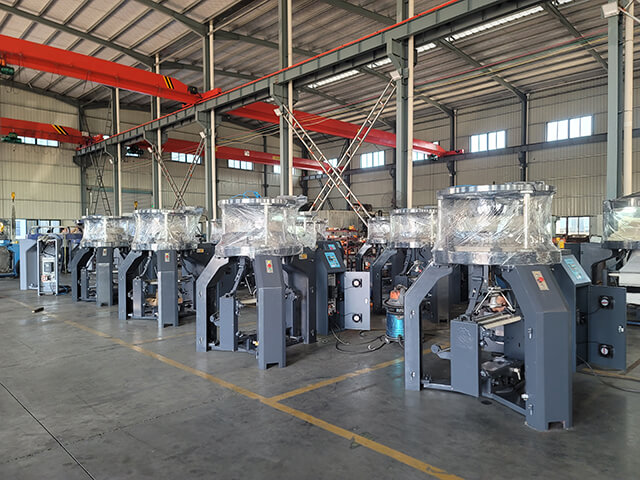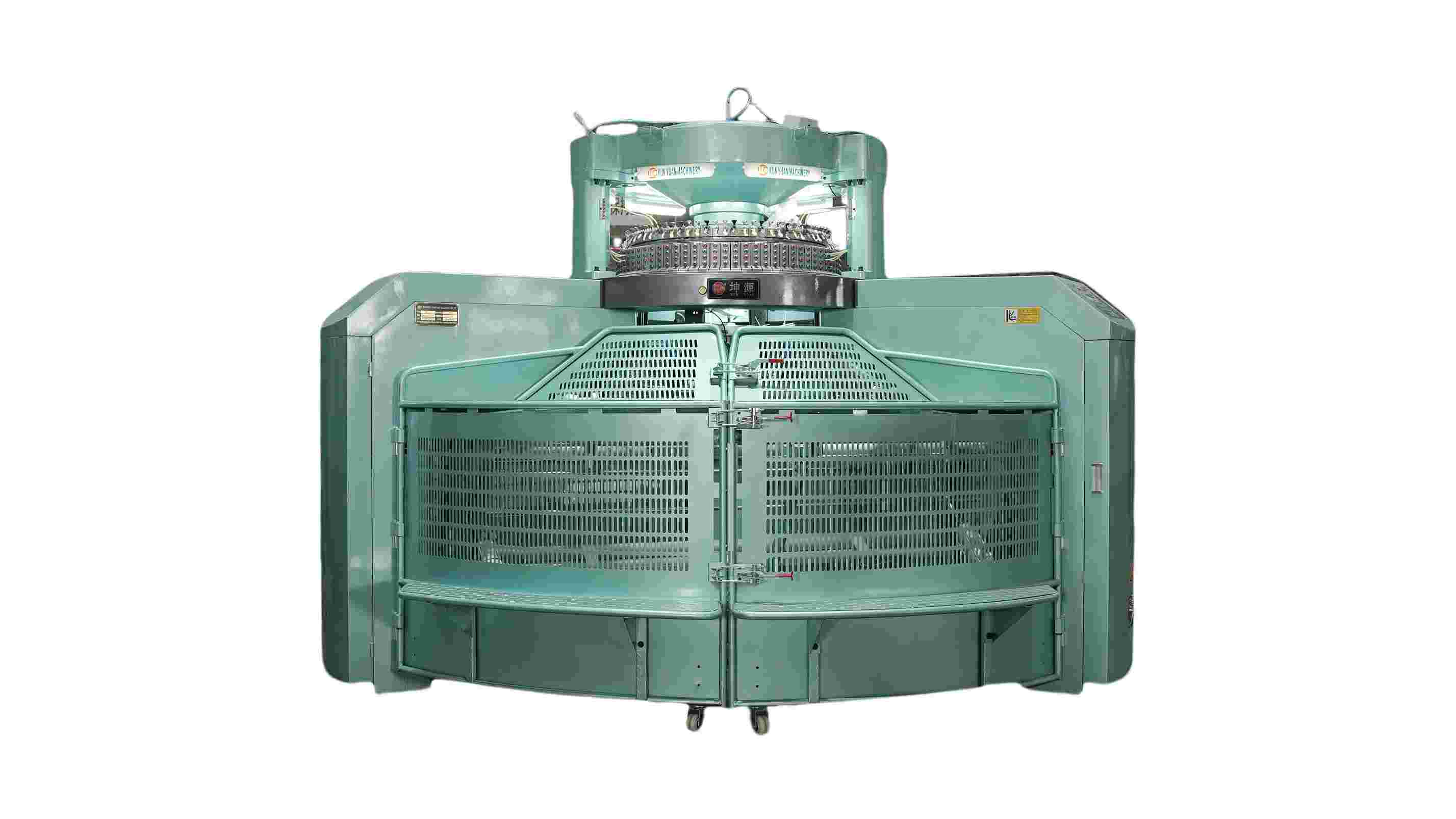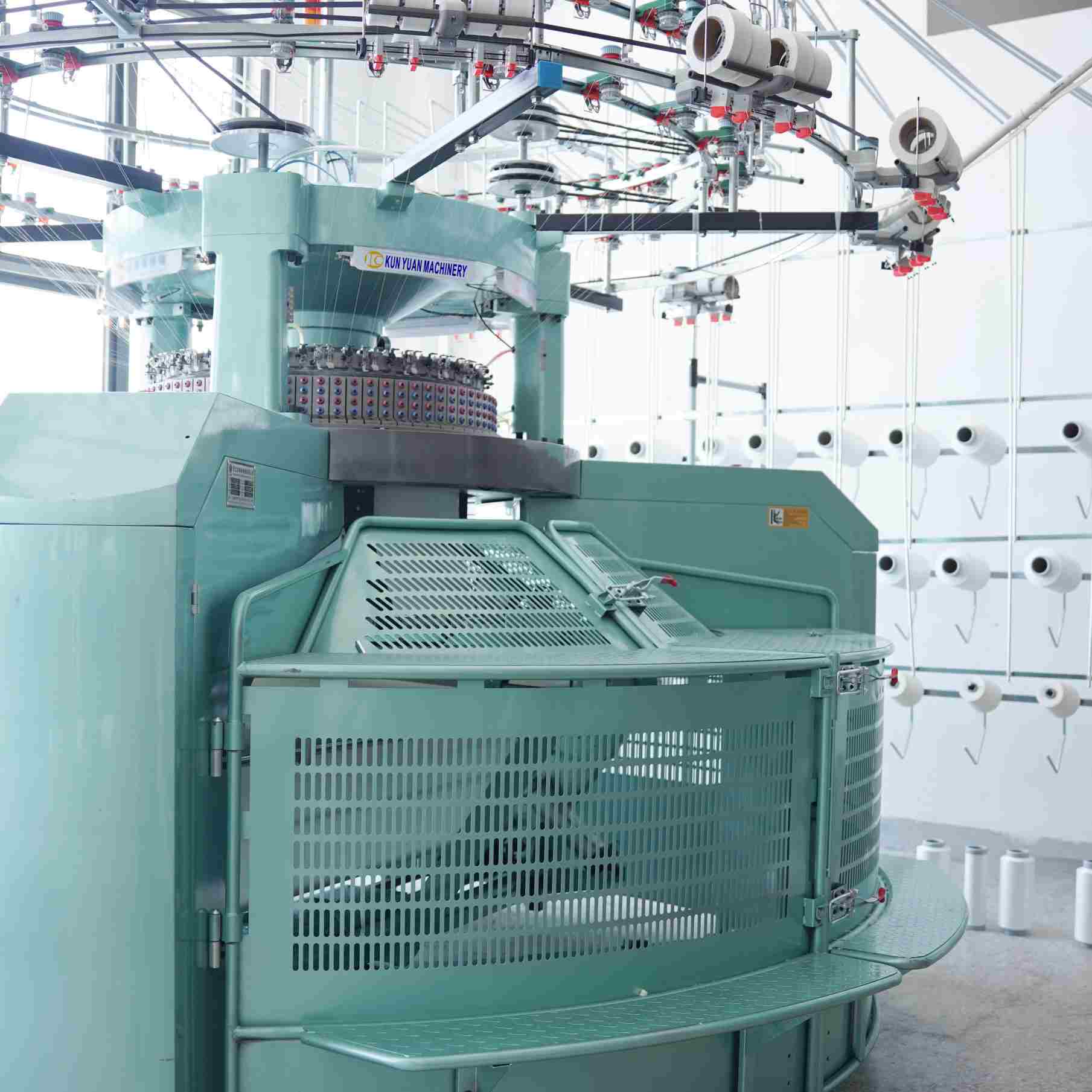
1. Computerized Controls. 2. Multi-Feeder Systems. 3. Automatic Yarn Changers. 4. Seamless Knitting. 5. High-Speed Performance. 6. Fabric Quality Monitoring. 7. Energy Efficiency. 8. Customization and Flexibility. Conclusion....
Introduction. 1. Understanding the Machine. 2. Preparing the Site. 3. Unboxing and Assembly. 4. Electrical and Mechanical Connections. 5. Calibrating and Testing. 6. Training and Familiarization. 7. Integration with Production Workflow. 8. Maintenance and Support. Conclusion....
1. Increased Efficiency. 2. Precision and Consistency. 3. Versatility in Design. 4. Time and Cost Savings. 5. Enhanced Productivity. 6. Improved Quality Control. 7. Sustainable and Environmentally Friendly. 8. Innovation and Adaptability. Conclusion....

This machine features a pneumatic opening width system that ensures smooth fabric spreading and rolling, reducing wrinkles and improving fabric quality. Designed for double-sided knitti...

The High Pile Jacquard Circular Knitting Machine is a state-of-the-art textile machinery designed to produce high-quality jacquard fabrics with a high pile finish. It is equipped with a...

The High Pile Cutting Circular Knitting Machine is a state-of-the-art textile manufacturing equipment designed for producing high-pile fabrics with precision and efficiency. This machin...
The Double-Sided Thread Interchangeable Circular Knitting Machine is a cutting-edge textile machine designed to produce high-quality, double-sided knitted fabrics with the ability to ...
Pneumatic High-heel Knitting Machine Features: Pneumatic Control System: Utilizes a pneumatic system for precise control, reducing mechanical wear and improving operational sta...